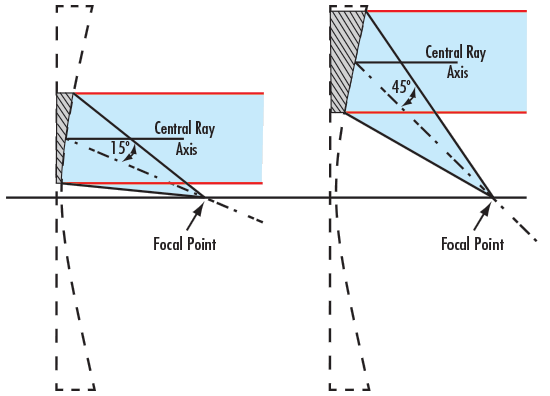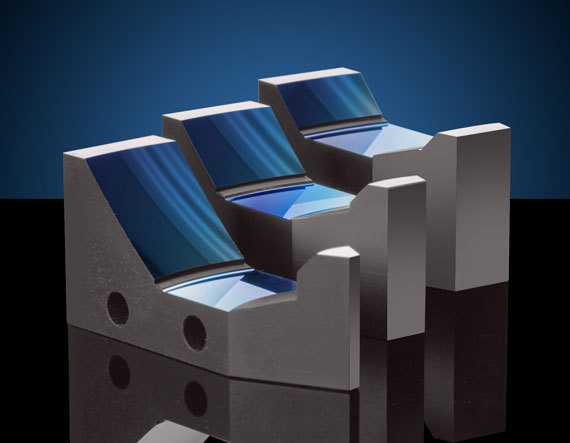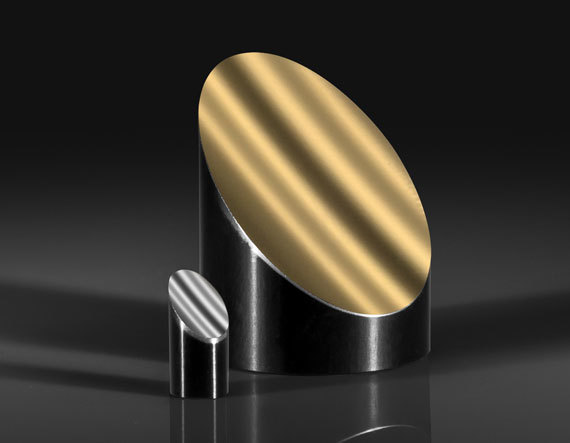

|
|
Conventional glass beam expanders are highly wavelength dependent |
|
|
Reflective optics are advantageous for UV, IR, broadband, and ultrafast lasers |
|
|
Reflective beam shaping optics are achromatic, decreasing aberrations |
|
|
Well-positioned for emerging laser technologies due to flexibility |
UV, IR, broadband, and ultrafast lasers are essential to an enormous range of applications from spectroscopy to micromachining to laser surgery. However, it is more difficult to find beam shaping optics such as beam expanders for these non-visible lasers, as conventional transmissive optics are highly wavelength dependent and can suffer from dispersion. Reflective beam shaping optics solve these issues with a broadband achromatic design by completely eliminating chromatic and spherical aberration. Reflective beam expanders and mirrors also tend to be less expensive than those specially designed for a specific non-visible wavelength or broad waveband.
Reflective Beam Expanders are modified Gregorian or Cassegrain mirror systems that offer broadband performance virtually free of chromatic and spherical aberration. They are compatible with a wide range of laser sources including:
A convex mirror is used to expand an incident beam onto a concave mirror, resulting in a larger collimated beam.

Focusing mirrors, such as Off-Axis Parabolic Mirrors (OAPs), also eliminate chromatic aberrations and avoid the drawbacks of transmissive beam conditioning optics. Parabolic mirrors have the added benefit of focusing or collimating light without introducing spherical aberration. OAPs are side sections of a larger parent parabolic mirror, giving them more interactive space around the focal point without disrupting the beam, as seen in Figure 2.



The diamond turned TECHSPEC® Canopus Reflective Beam Expanders are ideal for broadband or achromatic beam expansion and a wide range of light sources. They have minimal wavefront distortion and their achromatic, all-reflective design enables them to be used with tunable, ultraviolet, and ultrafast lasers. Integrated mounting features including reflective flats, thread holes, and thru-holes greatly simplify mounting, alignment, and integration into any laser-based application. The monolithic construction also ensures stability and performance independent of changes in temperature.
Learn More

TECHSPEC® Off-Axis Parabolic (OAP) Metal Mirrors offer surface roughness down to 50Å RMS and are free of chromatic and spherical aberration. Their solid metal design and lack of adhesives provides optimal thermal conductivity. OAPs allow for unrestricted access to the focal point, facilitating compact system designs. These features make OAPs ideal for instrumentation and laser systems including MTF, FLIR, FTIR, and Schlieren, along with IR lasers such as quantum cascade lasers. TECHSPEC® diamond turned metal substrate mirrors are available in 15°, 30°, 45°, 60°, or 90° Off-Axis options.
Learn More What magnifications are available for the TECHSPEC® Canopus Reflective Beam Expanders?
What magnifications are available for the TECHSPEC® Canopus Reflective Beam Expanders?
 What coating options are available for the TECHSPEC® Canopus Reflective Beam Expanders?
What coating options are available for the TECHSPEC® Canopus Reflective Beam Expanders?
The TECHSPEC® Canopus Reflective Beam Expanders are available with enhanced aluminum, protected aluminum, and bare gold coatings.
 What wavelength range do TECHSPEC® Off-Axis Parabolic Mirrors cover?
What wavelength range do TECHSPEC® Off-Axis Parabolic Mirrors cover?
The wavelength range for TECHSPEC® Off-Axis Parabolic Mirrors is dependent on the mirror’s coating. Three different coatings are available including protected aluminum, protected gold, and bare gold, covering 400nm to more than 12000nm.
 What design parameters should I use for a custom Off-Axis Parabolic Mirror?
What design parameters should I use for a custom Off-Axis Parabolic Mirror?
The design parameters required to make a cost efficient, custom OAP include the reflected focal length, reflected angle, the tolerance for the focal point, and the reflected wavefront distortion.
or view regional numbers
QUOTE TOOL
enter stock numbers to begin
Copyright 2023 | Edmund Optics, Ltd Unit 1, Opus Avenue, Nether Poppleton, York, YO26 6BL, UK
California Consumer Privacy Act (CCPA): Do Not Sell or Share My Personal Information
California Transparency in Supply Chains Act